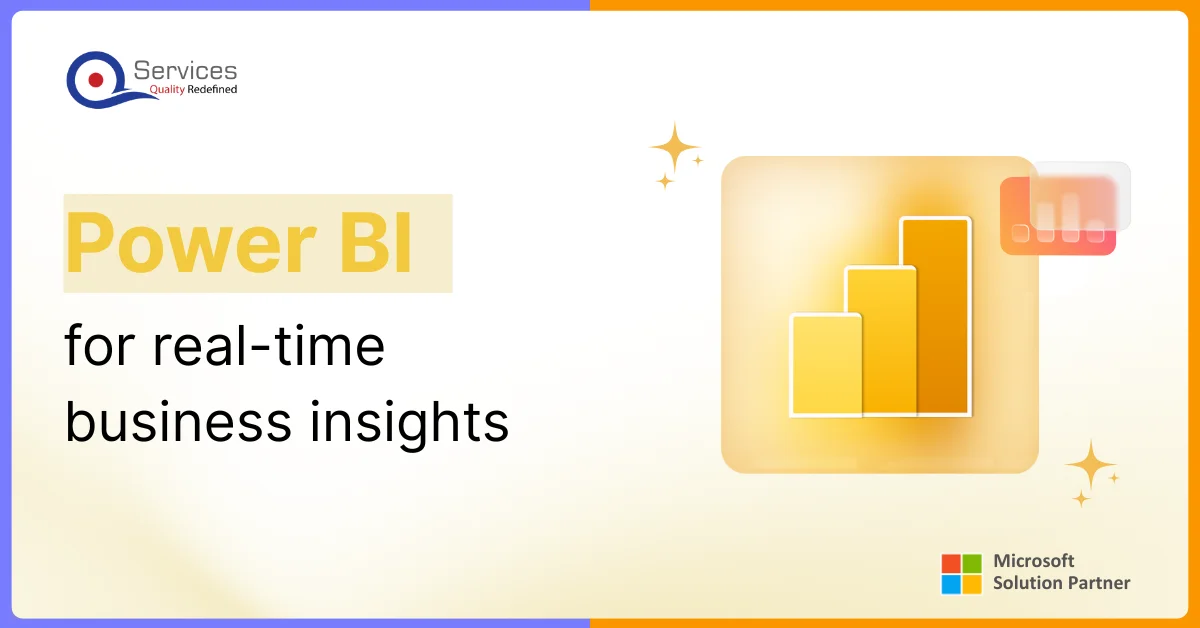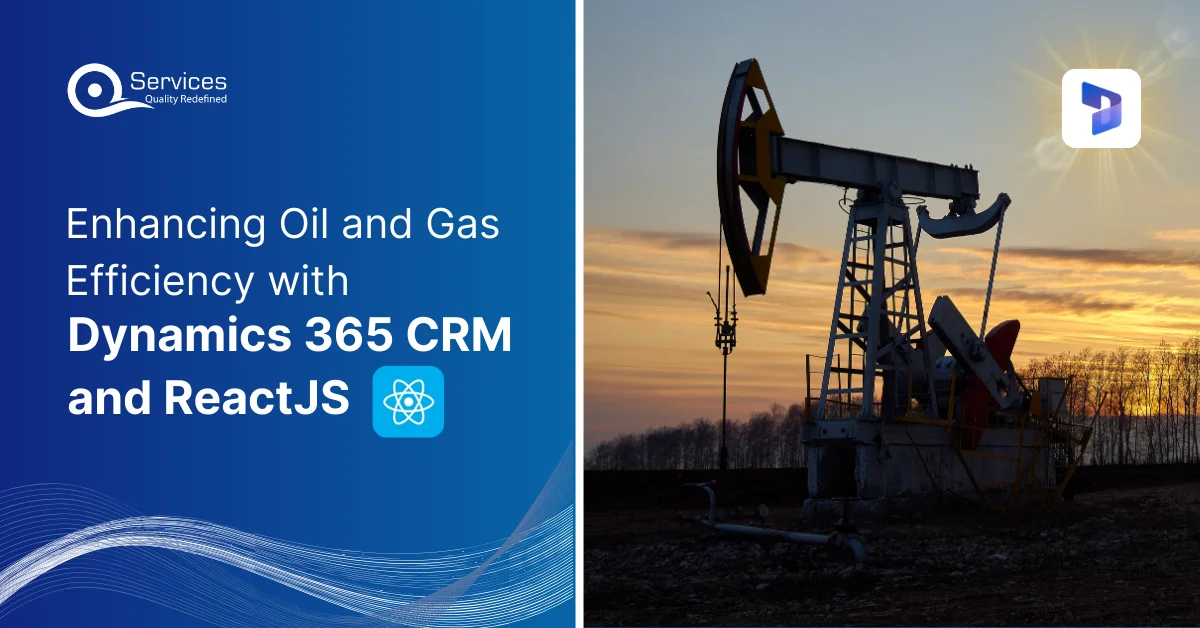
Home » Improving R&D Process Automation by Power Automate in Oil and Gas Industry

The future of the oil and gas industry is increasingly moving towards a data-driven approach, with a strong emphasis on technology and automation. As technological advancements continue to evolve, the industry is leveraging data analytics, artificial intelligence, and machine learning to optimize operations, improve efficiency, and reduce costs. Automation is one of the key technologies that can digitally transform oil and gas industry operations.
In this blog, we will discuss how Power Automate helps in R&D process automation in the oil and gas industry.
The R&D (Research and Development) process is a structured method industries use to innovate and enhance technologies, products, or processes. It begins with research to identify potential areas for improvement or new opportunities. Subsequently, new solutions are developed, tested, and refined to boost efficiency, quality, or sustainability. Across different sectors, such as oil and gas, technology, healthcare, and manufacturing, the R&D process is instrumental in driving innovation, streamlining operations, and tackling industry-specific challenges. Oil and gas automation is increasingly becoming a focal point within the R&D process, leveraging technologies like Power Automate to streamline operations and optimize workflows.
Get free Consultation and let us know your project idea to turn into an amazing digital product.
The Research and Development (R&D) process in the oil and gas industry is a critical component that drives innovation, efficiency, and sustainability. This process involves a series of stages aimed at discovering new technologies, improving existing processes, and addressing industry-specific challenges. Here’s an overview of the R&D process stages and the challenges commonly faced in the oil and gas industry.
Research: Research is the initial phase to identify new opportunities and technologies for oil and gas exploration, production, and refining. Activities include market research, industry trend analysis, and exploring emerging technologies.
Ideation: Ideation involves brainstorming innovative ideas to address identified challenges. This stage includes organizing brainstorming sessions and developing conceptual designs.
Feasibility Analysis: Feasibility analysis evaluates the technical, financial, and market viability of proposed ideas. Activities include assessing technical requirements, estimating costs, and analyzing market potential.
Development: The development stage focuses on designing and prototyping the proposed solutions. Activities include designing prototypes and conducting laboratory tests to refine the solutions.
Testing and Validation: Testing and validation ensure the quality and functionality of the developed solutions. This stage involves rigorous testing in simulated or real-world conditions and making refinements based on the test results.
Commercialization: Commercialization introduces the developed technologies or products to the market. Activities include developing marketing strategies and launching solutions to generate revenue.
Post-launch Evaluation: The post-launch evaluation monitors the performance of the launched solutions and gathers customer feedback. Activities include collecting performance data and iterating on the solutions based on feedback to improve their performance.
Industries often grapple with intricate technologies and processes that demand in-depth understanding and expertise. Integrating advanced technologies into existing systems can further complicate the landscape, necessitating specialized knowledge and meticulous planning for successful implementation.
The development of new technologies or methodologies entails significant financial investment in cutting-edge equipment, software, and skilled personnel. While these innovations hold the promise of long-term cost savings and efficiency gains, the initial capital outlay can strain R&D budgets, requiring careful financial planning and resource allocation.
Adhering to regulatory standard considerations is significant in the development of new technologies. Ensuring compliance with safety requires rigorous testing, validation, and adherence to industry standards to mitigate risks and ensure sustainability.
The ever-changing market dynamics, influenced by shifts in demand and pricing, can introduce volatility into R&D strategies and priorities. Organizations must exhibit flexibility and adaptability, continuously monitoring market trends and adjusting R&D efforts to align with market demands and maintain competitiveness.
To ensure seamless integration of new technologies with existing systems and workflows is one of the challenges in the oil and gas industry for smooth operation and optimal performance. Companies must undertake meticulous planning, coordination, and potentially, custom development to bridge compatibility gaps, ensuring that new solutions integrate seamlessly with legacy systems and enhance overall operational efficiency.
Microsoft Power Automate is a cloud-based service designed to streamline and automate workflows across various applications and services.
In the context of oil and gas process operations R&D, Microsoft Power Automate can be a valuable tool for automating tasks and processes. It can automate data collection and analysis, integrate data from different platforms, automate reporting, and facilitate team collaboration. By utilizing Power Automate, organizations in the oil and gas industry can improve operational efficiency, minimize errors, and accelerate advancements in their R&D initiatives.
Power Automate offers several advantages to the R&D process within the Oil and Gas industry:
Efficiency: By automating repetitive tasks, Power Automate frees up time, enabling employees to concentrate on more intricate and value-driven activities, boosting overall efficiency.
Data Management: Power Automate streamlines data collection, processing, and sharing among team members. This ensures real-time access to up-to-date data, enhancing informed decision-making and maintaining team alignment.
Cost-Effectiveness: Automating tasks with Power Automate reduces operational costs. For instance, automating data entry or trend verification can significantly increase a technician’s value-added work, optimizing resource utilization.
Risk Mitigation: Power Automate aids in maintaining safety and compliance by automating safety checks and compliance reporting. This automation streamlines compliance processes, minimizing the risk of non-compliance and potential penalties.
Integration: With seamless integration into Microsoft services like Office 365, Dynamics 365, and Azure, Power Automate facilitates the creation of automated workflows, optimizing data collection, analysis, and reporting processes.
Innovation: Power Automate’s AI Builder feature offers no-code AI capabilities to enhance business performance. It automates tasks requiring human judgment, such as form processing and object detection, driving innovation within the R&D process.

Microsoft Power Automate is a comprehensive service designed to facilitate automated workflows across a range of applications and services. It enables synchronization of files, real-time notifications, data collection, and more. In the context of automation in oil and gas industry, Power Automate can simplify the automation process in several ways:
Power Automate streamlines complex back-office operations, including recruitment, payroll processing, reporting, and invoice management. By automating these tasks, organizations can optimize resource allocation, reduce manual errors, and enable employees to concentrate on strategic, value-driven activities.
By utilizing real-time data from interconnected sensors like the Industrial Internet of Things (IIoT), Power Automate supports efficient asset management and predictive maintenance. This intelligent asset management enhances asset utilization, prolongs asset lifespan, and minimizes downtime.
Power Automate aids in ensuring safety and regulatory compliance by automating safety protocols, compliance reporting, and related tasks. It can automate safety protocols, which are essential in maintaining safe operations. It can also automate compliance reporting, a task that is often time-consuming and prone to human error. This automation fosters more streamlined and reliable compliance processes, mitigating the risk of non-compliance and associated penalties.
Power Automate is a handy tool from Microsoft that helps you set up automatic tasks between different apps and services. It works smoothly with Microsoft’s popular tools like Office 365, Dynamics 365, and Azure. This means you can create workflows that connect these services and do tasks without you having to do them manually.
For example, you can make a workflow that saves email attachments from Office 365 straight to a specific folder in Azure Storage. This keeps your files organized and safe without you needing to move them yourself. Or you could set up a workflow that updates a record in Dynamics 365 whenever you make changes to an Excel spreadsheet in Office 365. This helps keep all your data up-to-date and accurate across different tools.
Power Automate comes with RPA features that can handle repetitive tasks across different Windows and web apps. This includes jobs like data entry, filling out forms, or running complex tasks that involve multiple apps. Automating these tasks with Power Automate saves a lot of time, letting engineers focus on more important and complex work.
In the oil and gas industry, this automation brings several advantages. It speeds up data analysis by automating the steps of collecting, cleaning, and analyzing data. This means quicker insights and faster decision-making. Plus, it cuts down on maintenance costs by automating regular checks and tasks, which lowers the chances of mistakes and equipment downtime.
Power Automate streamlines data collection by connecting to various sources like Excel, databases, and cloud storage, pulling data automatically at set intervals or triggers. This can include operational and financial data, storing it centrally for easy access. In an oil and gas context, it could collect seismic and operational data, ensuring all relevant information is captured. Additionally, Power Automate automates data analysis, processing and deriving insights from the collected data. For the oil and gas sector, this means identifying reserves, optimizing drilling, and predicting equipment failures. For example, it could automatically analyze seismic data to detect oil or gas patterns or identify inefficiencies in drilling processes.
Power Automate significantly enhances team communication and collaboration by automating key workflow elements. Its automated notifications send timely alerts based on specific triggers, keeping team members informed and reducing missed updates. Alongside notifications, Power Automate automates routine tasks like meeting scheduling and reminders, streamlining task management. It also simplifies data sharing among team members, facilitating easy access and collaboration on the latest data.
Furthermore, Power Automate seamlessly integrates with Microsoft Teams, bolstering its collaboration features. This integration enables automated functions such as message posting and team/channel creation within Teams. Together, these features create a unified workspace for efficient communication, collaboration, and task execution.
Implementing Power Automate for specialized R&D processes follows a structured approach:
Start by identifying the specific processes within the R&D cycle that could benefit from automation. These may include data collection, analysis, reporting, and communication and collaboration tasks. Recognizing these areas lays the foundation for effective automation.
Once the processes are identified, outline the workflow in detail. Break down each process into actionable steps, pinpointing where automation can streamline tasks. Clearly defining the desired outcomes for each step ensures clarity and direction in the automation process.
Power Automate offers a diverse set of tools and features tailored for different automation needs. For straightforward tasks, creating ‘flows’ directly within Power Automate is sufficient. For intricate processes requiring more advanced automation, Power Automate Desktop, equipped with Robotic Process Automation(RPA) capabilities, is ideal.
With the workflow mapped out and the right tools selected, proceed to construct the automation. Utilize Power Automate’s intuitive interface to select triggers—events initiating the workflow—and actions—tasks executed upon triggering. This step transforms the conceptualized workflow into a functional automation sequence.
After constructing the workflow, rigorously test it to validate its functionality and accuracy. Executing the workflow and scrutinizing the outcomes helps identify and rectify any discrepancies or inefficiencies.
Upon successful testing and refinement, activate the automated workflow for deployment. In Power Automate, this involves enabling the flow, allowing it to autonomously manage the designated processes.
After deployment, ongoing monitoring of the automated workflow is crucial to ensure seamless operation. Continuous monitoring facilitates early detection of issues and provides insights for optimization, ensuring the automation consistently delivers value to the R&D process.
Should organizations opt for Power Automate? Yes, Power Automate becomes an innovative tool when one considers the evolution of the oil and gas business, where efficiency, automation, and data-driven insights are becoming more and more important.
By leveraging Power Automate, organizations can effectively navigate the complexities of R&D in the oil and gas sector. It offers a compelling solution for organizations aiming to innovate and optimize their R&D processes in the oil and gas industry. Its comprehensive features, coupled with its adaptability and efficiency, make it a valuable investment for organizations committed to driving growth, efficiency, and innovation. Microsoft Power Automate not only addresses the complex challenges faced during the R&D process but also offers streamlined solutions that boost overall productivity. To delve deeper into how Power Automate champions safety and compliance within the oil and gas sector, check out our blog on its pivotal role in ensuring industry standards. Click Here.

Our Articles are a precise collection of research and work done throughout our projects as well as our expert Foresight for the upcoming Changes in the IT Industry. We are a premier software and mobile application development firm, catering specifically to small and medium-sized businesses (SMBs). As a Microsoft Certified company, we offer a suite of services encompassing Software and Mobile Application Development, Microsoft Azure, Dynamics 365 CRM, and Microsoft PowerAutomate. Our team, comprising 90 skilled professionals, is dedicated to driving digital and app innovation, ensuring our clients receive top-tier, tailor-made solutions that align with their unique business needs.

The oil and gas industry works in some of the most challenging and most demanding environments on the planet. From offshore rigs to large refineries, the machinery and infrastructure that powers this sector is extremely important for the global energy supply chain. However, equipment failures can lead to costly downtime, security risks and environmental hazards

Companies are catching on to the fact that they need cool tech like Dynamics 365 CRM and ReactJS if they want to keep things running smooth and make smarter choices.

The oil and gas industry has long been a cornerstone of the global economy, powering industries, transportation, and households. However, as the world shifts toward cleaner energy and greater efficiency, the sector faces unprecedented challenges and opportunities. The convergence of artificial intelligence (AI), automation, and modern data technologies like GraphQL is revolutionizing how this industry operates.
R&D, or Research and Development, in the oil and gas industry means working on new ways to do things better. It’s about finding and using new technologies or methods to make the industry more efficient.
Power Automate helps the oil and gas industry by making tasks easier and faster. It can automate many processes, like collecting data or filling out reports, which saves time and makes work smoother.
Power Automate fosters innovation in R&D through its AI Builder feature, which offers no-code AI capabilities. This allows organizations to automate tasks that traditionally require human judgment, freeing up valuable time for engineers and researchers to focus on more complex and innovative initiatives. By streamlining these processes, Power Automate accelerates the pace of innovation within the R&D sector.
Power Automate addresses market volatility by automating key processes, allowing companies to respond swiftly to market shifts. By providing real-time data insights and streamlining workflows, it enhances data-driven decision-making. This agility enables organizations to adapt their strategies more effectively in fluctuating market conditions.
Automating R&D processes with Power Automate brings several advantages. It enhances efficiency by automating repetitive tasks, streamlines data management by integrating various data sources, ensures cost-effectiveness through reduced manual efforts, and facilitates risk mitigation and compliance. Additionally, its seamless integration with Microsoft services allows for a unified and cohesive workflow across platforms.

Founder and CEO

Chief Sales Officer
